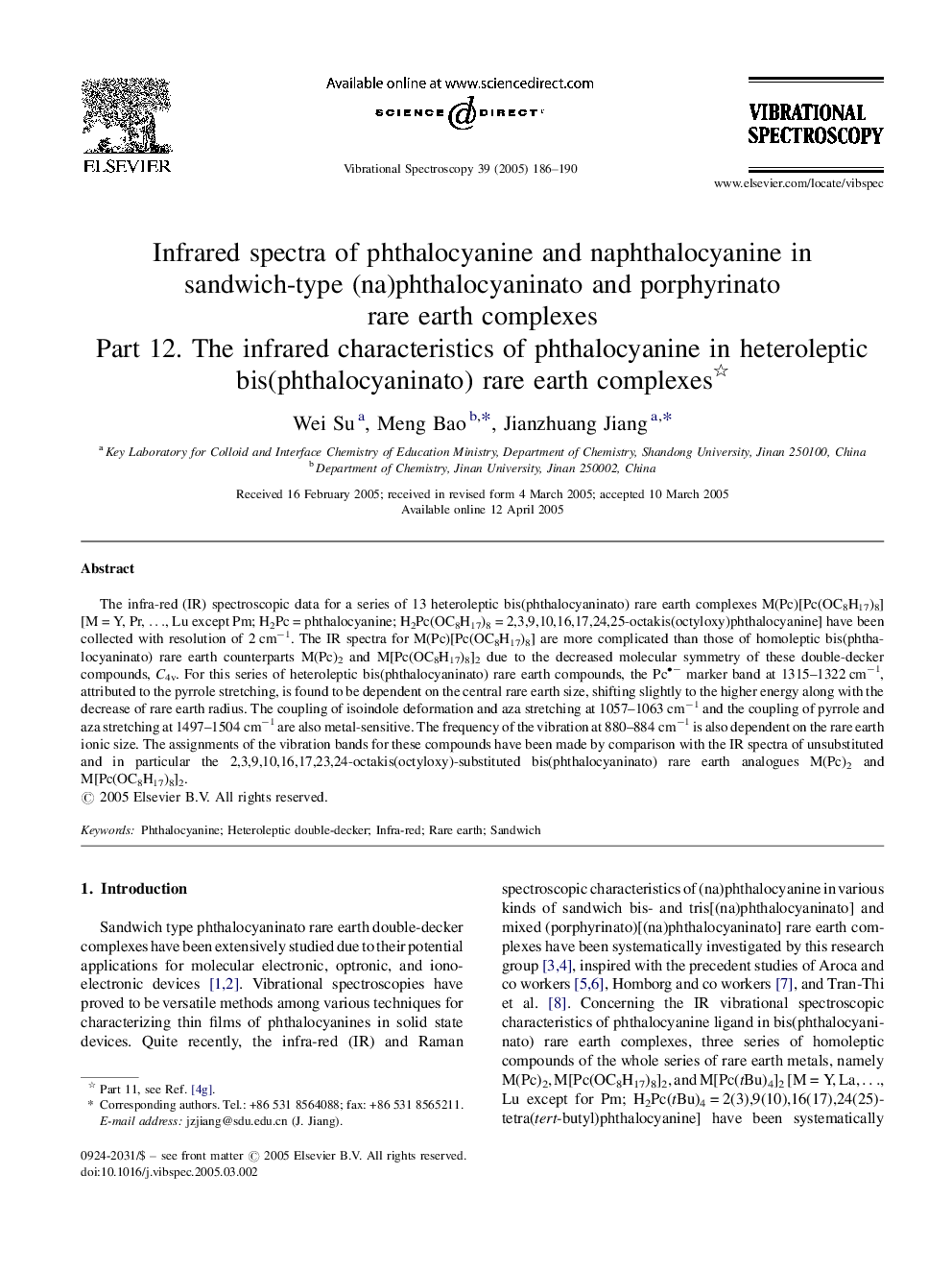| Article ID | Journal | Published Year | Pages | File Type |
|---|---|---|---|---|
| 10564441 | Vibrational Spectroscopy | 2005 | 5 Pages |
Abstract
The infra-red (IR) spectroscopic data for a series of 13 heteroleptic bis(phthalocyaninato) rare earth complexes M(Pc)[Pc(OC8H17)8] [M = Y, Pr, â¦, Lu except Pm; H2Pc = phthalocyanine; H2Pc(OC8H17)8 = 2,3,9,10,16,17,24,25-octakis(octyloxy)phthalocyanine] have been collected with resolution of 2 cmâ1. The IR spectra for M(Pc)[Pc(OC8H17)8] are more complicated than those of homoleptic bis(phthalocyaninato) rare earth counterparts M(Pc)2 and M[Pc(OC8H17)8]2 due to the decreased molecular symmetry of these double-decker compounds, C4v. For this series of heteroleptic bis(phthalocyaninato) rare earth compounds, the Pcâ marker band at 1315-1322 cmâ1, attributed to the pyrrole stretching, is found to be dependent on the central rare earth size, shifting slightly to the higher energy along with the decrease of rare earth radius. The coupling of isoindole deformation and aza stretching at 1057-1063 cmâ1 and the coupling of pyrrole and aza stretching at 1497-1504 cmâ1 are also metal-sensitive. The frequency of the vibration at 880-884 cmâ1 is also dependent on the rare earth ionic size. The assignments of the vibration bands for these compounds have been made by comparison with the IR spectra of unsubstituted and in particular the 2,3,9,10,16,17,23,24-octakis(octyloxy)-substituted bis(phthalocyaninato) rare earth analogues M(Pc)2 and M[Pc(OC8H17)8]2.
Related Topics
Physical Sciences and Engineering
Chemistry
Analytical Chemistry
Authors
Wei Su, Meng Bao, Jianzhuang Jiang,
